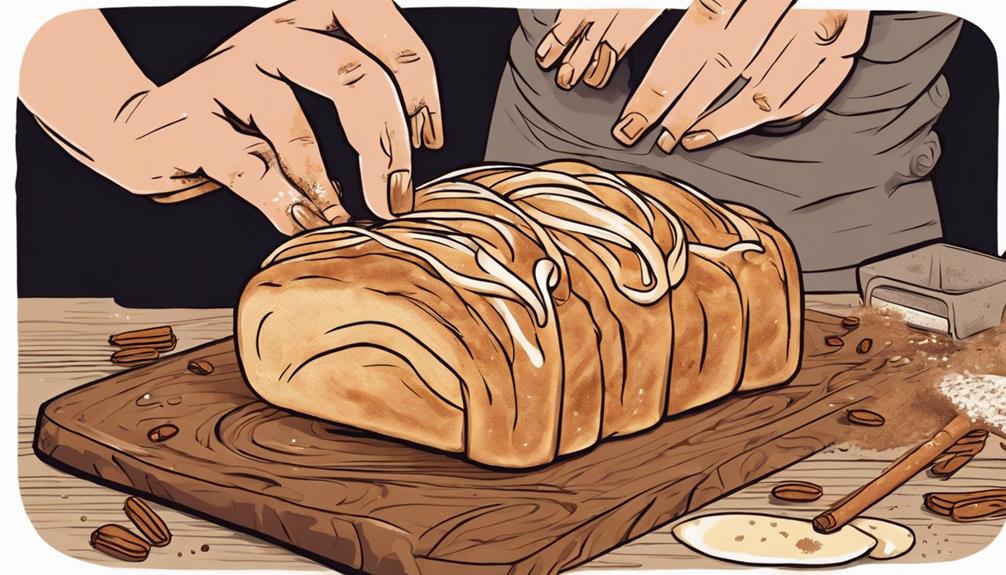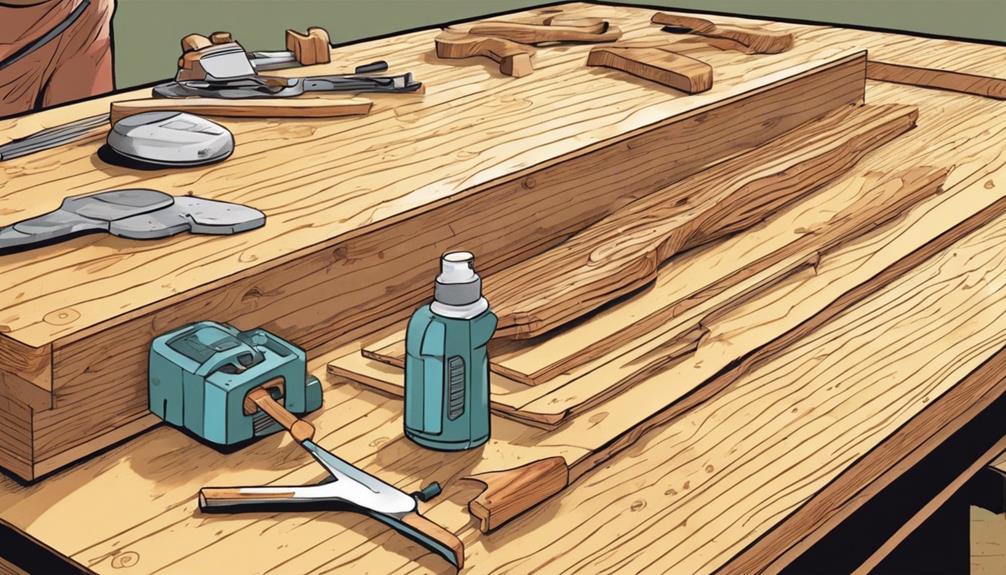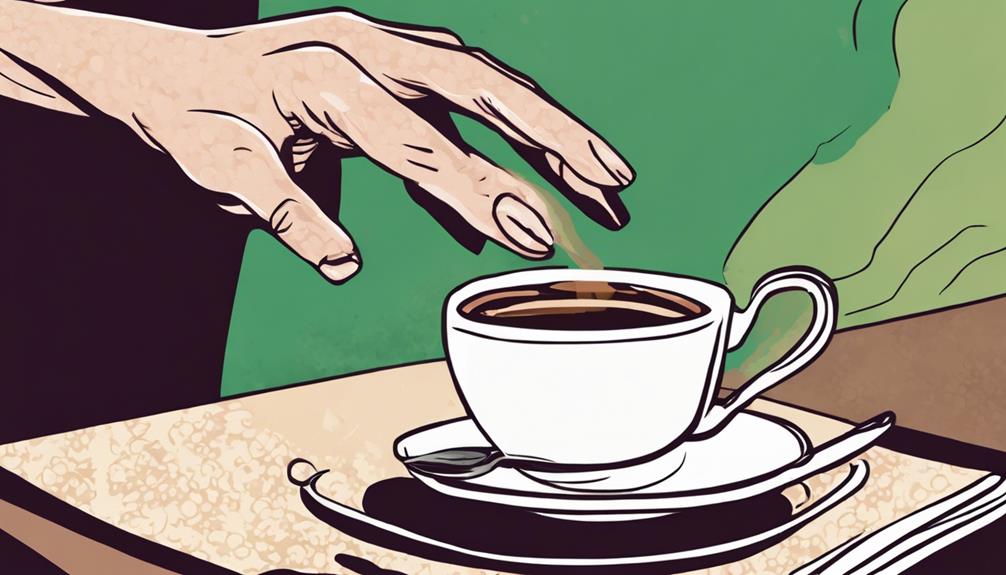To make coffee bread for breakfast, begin by mastering simple three-strand braids for an easy approach. Progress to tighter weaves with four-strand braids for a more intricate look. For a classy touch, try the decorative options of a six-strand braid. Enhance classic recipes by including cardamom for a flavorful twist. Experiment with different braid styles and spices such as nutmeg, cinnamon, and ginger. These methods will enhance the presentation and taste of your coffee bread. Elevate your breakfast with a beautifully woven and aromatic Cardamom Coffee Braid.
Key Takeaways
- Master braiding techniques like three-strand, four-strand, or six-strand for decorative coffee bread.
- Incorporate fragrant spices like cardamom, nutmeg, cinnamon, or ginger for flavorful coffee bread.
- Ensure yeast activation with proper liquid temperature (100°F-115°F) and adequate kneading for gluten development.
- Use wire racks for efficient cooling and optimal texture in baked coffee bread.
- Experiment with different fillings like cream cheese, fruit preserves, coconut, or nuts for varied flavors in coffee bread.
Bread Braiding Techniques
To achieve beautifully braided coffee bread, familiarize yourself with various braiding techniques such as three-strand, four-strand, or six-strand braids. Braiding bread dough not only adds an aesthetic touch but also enhances the overall presentation of sweet bread loaves, making them ideal for special occasions.
The three-strand braid is a classic and simple technique, perfect for beginners. For a more intricate design, try the four-strand braid, which creates a tighter weave and a more complex look. If you're feeling adventurous, the six-strand braid offers even more decorative possibilities, adding an extra level of sophistication to your coffee bread.
Mastering these braiding techniques requires practice and patience but yields stunning results, impressing guests and elevating your baking skills. The art of braiding bread dough before baking not only enhances the visual appeal but also guarantees an even distribution of flavors throughout the loaf.
Next, let's explore a delectable Cardamom Coffee Braid Recipe to put your newfound braiding skills to the test!
Cardamom Coffee Braid Recipe

You'll love the flavorful twist that cardamom brings to the traditional coffee braid recipe.
Spice up your breakfast routine with the mild warmth and aromatic depth of cardamom, perfectly complementing nutmeg, cinnamon, and ginger.
Let the cardamom take center stage as you braid your way to a delicious and fragrant morning treat.
Braiding Technique Tips
For achieving a beautifully woven Cardamom Coffee Braid, mastering the braiding technique is necessary.
When working with braided dough, consider these tips to elevate your coffee bread game:
- Experiment with Different Braid Styles: While the three-strand braid is a classic choice, don't hesitate to try the four-strand or six-strand braids for a unique touch to your coffee bread. Each braid style offers variations in appearance and texture that can enhance the overall presentation of your baked goods.
- Focus on Consistent Tension: Dividing the dough evenly and weaving the sections with consistent pressure is essential for creating a visually appealing braid. Practice maintaining the same level of tightness throughout the braiding process to guarantee a uniform shape and prevent any gaps in the final product.
- Tighten as You Go: As you braid the dough, remember to tighten the strands gradually. This technique helps in keeping the braid intact and results in a beautifully woven coffee bread without any loose sections.
Flavorful Ingredient Combinations
Consider incorporating a dash of nutmeg or a sprinkle of cinnamon to complement the subtle spiciness of cardamom in your Cardamom Coffee Braid recipe. These flavorful ingredient combinations can elevate the taste profile of your sweet bread while adding a hint of warmth and complexity. Cardamom, with its mild spice flavor reminiscent of a mix of black pepper and cinnamon, pairs harmoniously with nutmeg, cinnamon, and even ginger in traditional recipes. The addition of nutmeg can bring a slightly sweet and nutty undertone, while cinnamon provides a familiar warmth that enhances the overall flavor profile of the braid. Ginger, with its zesty and slightly spicy notes, can also be a delightful addition to experiment with in your sweet bread creations.
| Spice | Complements |
|---|---|
| Cardamom | Nutmeg, Cinnamon, Ginger |
| Nutmeg | Cardamom, Cinnamon |
| Cinnamon | Cardamom, Nutmeg |
| Ginger | Cardamom |
Yeast Activation Tips

To activate yeast successfully, make sure the liquid temperature falls between 100°F-115°F for best fermentation results.
When preparing your dough, there are some key tips to keep in mind for ideal yeast activation:
- Avoid Salt-Yeast Contact: Make sure there's no direct contact between yeast and salt as it can impede the activation process.
- Knead Well for Gluten: Kneading the dough adequately until it passes the window pane test is essential for developing a strong gluten structure.
- Preheat the Oven: Preheating the oven can assist in fermentation, especially in colder environments, providing a warm environment for the yeast to thrive.
Additionally, when incorporating warm milk into your recipe, make sure it feels slightly warm to the touch. This warmth is necessary for yeast happiness and activation.
Baking and Cooling Tricks

You should pay close attention to the cooling techniques when baking your braided coffee bread. Proper cooling methods are essential for achieving the desired texture and flavor in your final product.
Make sure to efficiently cool your bread to guarantee it turns out just right.
Cooling Techniques Importance
Proper cooling techniques play an essential role in maintaining the texture and flavor of your freshly baked goods. When it comes to braided sweet yeast bread, how you cool it can make a significant difference in the final product. Here's why it matters:
- Texture: Allowing the bread to cool at room temperature helps the structure set properly, ensuring a light and airy texture.
- Flavor: Proper cooling prevents the formation of a soggy or dense texture, preserving the delicious flavors of your sweet bread.
- Quality: Rapid cooling may lead to condensation, affecting the overall quality of your baked goods. Opting for a gradual cooling process is key to maintaining the excellence of your creation.
Proper Cooling Methods
Utilize a wire rack for efficient air circulation during the cooling process of your braided sweet yeast bread. This method helps prevent the bread from becoming soggy by allowing proper airflow around the entire loaf. After baking, transfer the bread to the wire rack promptly to start the cooling process.
When preparing the milk mixture for yeast activation, consider adding softened butter to scalded milk. This addition not only enhances the flavor but also helps lower the temperature quickly, creating an ideal environment for yeast activation. Making sure the milk mixture is at the correct temperature is essential for yeast happiness. Use a thermometer to confirm that the mixture feels slightly warm to the touch before incorporating the yeast.
Proper cooling guarantees that your braided coffee bread maintains its texture and flavor. By utilizing a wire rack, adding butter to scalded milk, and monitoring the temperature for yeast activation, you can achieve an evenly cooled and delicious final product.
Efficient Baking Cooling
When it comes to effective baking cooling, guaranteeing proper temperature control for yeast activation is crucial to successful bread making.
Incorporating soft butter into scalded milk effectively lowers the temperature for yeast activation. Using a thermometer to monitor the milk mixture ensures precise temperature control, providing ideal conditions for yeast happiness.
Proper cooling techniques involve making sure the milk mixture feels slightly warm to the touch, indicating ideal conditions for yeast activation.
Efficient cooling methods are essential for successful bread making, facilitating peak fermentation and rise. Quick cooling practices, such as monitoring temperatures and touch tests, help maintain yeast viability and overall bread quality.
Bread Enhancer Insights

Consider experimenting with bread enhancers to explore the impact on the texture of your baked goods. While bread enhancers aren't essential for achieving a soft and moist texture in bread, they can slightly influence the overall texture based on personal preference.
The addition of a bread enhancer is a choice that can offer variations in texture and structure, especially in sweet breads like the Cardamom Coffee Braid. This particular recipe doesn't require a bread enhancer for successful results, but incorporating one can provide a different baking experience.
If you decide to use a bread enhancer, keep in mind that it isn't a mandatory ingredient in baking sweet breads. It's important to understand that the texture of your bread may be subtly altered by the addition of a bread enhancer, so feel free to experiment to find the perfect balance that suits your taste preferences.
Cream Cheese Coffee Cake Variation
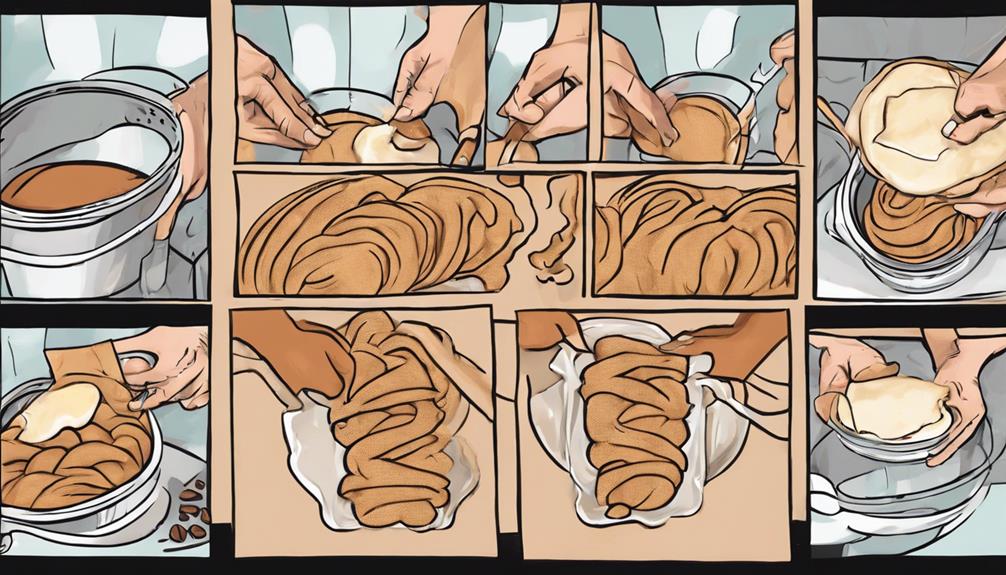
For a delightful twist on traditional braided sweet bread, explore the irresistible richness of a Cream Cheese Coffee Cake. This variation combines the indulgent flavors of cream cheese and coffee cake with a soft and buttery yeast dough.
The cream cheese filling adds a luxurious touch, creating a perfect balance of textures that will leave your taste buds craving more.
The yeast dough is prepared with warm water and left to rise until doubled in size, ensuring a light and fluffy braided loaf.
As the cream cheese coffee cake bakes to a golden brown hue, the aroma of freshly baked bread and sweet cream cheese fills your kitchen, building anticipation for that first delicious bite.
This recipe yields two loaves, making it an ideal choice for sharing with loved ones over a cozy breakfast or as a delightful treat for gatherings.
Baking and Filling Instructions
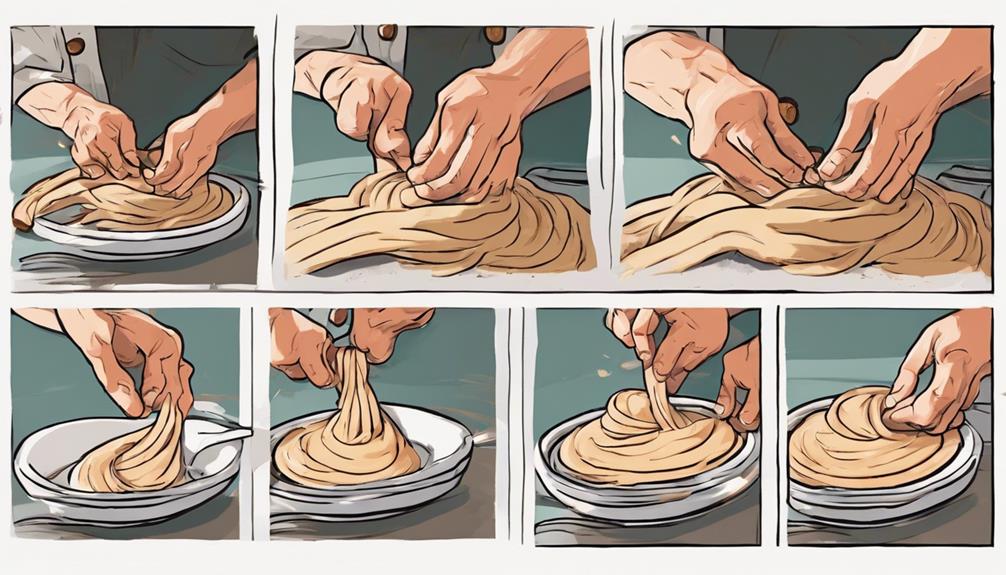
Begin by preparing the cream cheese coffee cake filling and assembling the braided bread dough according to your desired filling variations.
When braiding the dough, make sure to brush it with an egg wash before baking to achieve a beautiful golden finish. For added sweetness and crunch, consider sprinkling Swedish pearl sugar on top before baking.
Get creative with the fillings by spreading a layer of cream cheese filling and topping it with fruit preserves for a burst of flavor. If you're feeling adventurous, try experimenting with different fillings like coconut or nuts to cater to your preferences.
Don't have Swedish pearl sugar? No worries, you can use coarse sugar as an alternative to add a unique texture to your braided coffee bread.
Enjoy the process of creating your own customized bread with these filling instructions for a delightful breakfast treat.
Storage and Freezing Recommendations
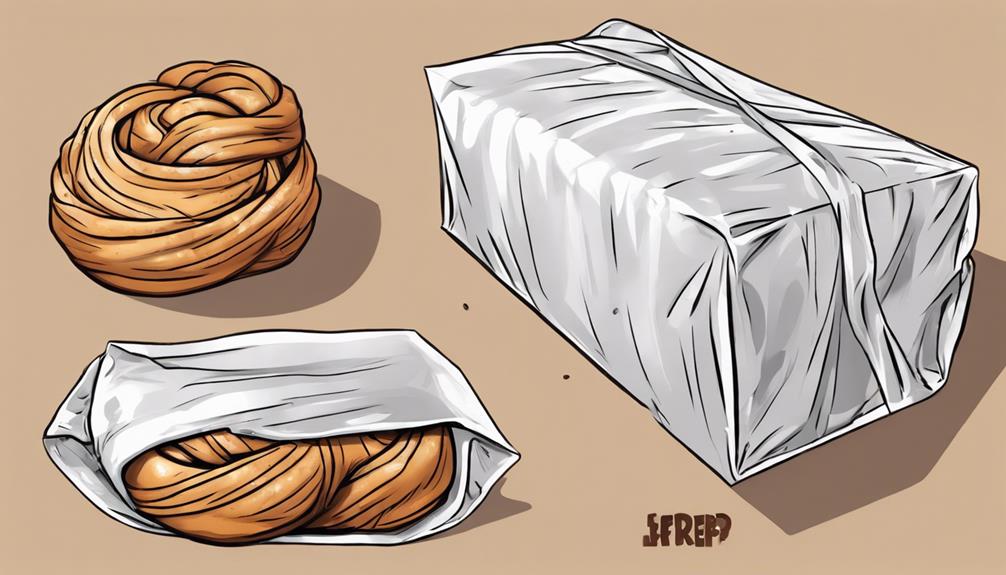
To maintain the freshness and extend the shelf life of your braided coffee bread, refrigerate the dough overnight for convenient do-ahead preparation before baking. When considering storage and freezing recommendations for your delightful creation, follow these tips:
- Chill dough overnight: This step allows for easy preparation ahead of time before baking the braided coffee bread.
- Freeze baked braids: For a prolonged shelf life, freeze the baked braids and enjoy them later at your convenience.
- Keep the braided coffee bread: Store the braided coffee bread in an airtight container at room temperature to preserve its freshness.
Additionally, if you face issues with filling leakage, it's crucial to maintain proper dough thickness to prevent any mishaps. Consider refrigeration if the filling tends to ooze out.
Frequently Asked Questions
Can You Braid Any Type of Bread?
Yes, you can braid any type of bread! Braiding adds a decorative touch to your baked goods, whether it's sweet coffee bread or savory options like garlic bread. Get creative and elevate your bread game!
Can You Braid Bread Dough?
Yes, you can braid bread dough to create visually appealing loaves. Practice dividing the dough into strands, crossing them over each other, and sealing the ends for a professional finish. Experiment with different braid styles for unique shapes.
What Are Braided Breads Called?
When you explore braided breads, you'll discover names like Challah, Zopf, and Cardamom Coffee Braid. These twist breads are beloved for their intricate designs and are perfect for special occasions, adding a touch of elegance to your table.
What Ingredient Makes Bread Soft and Fluffy?
To make bread soft and fluffy, add fats like butter or oil for moisture. Proper kneading techniques develop gluten, ensuring elasticity. Using the right amount of yeast and allowing sufficient rising time create air pockets, resulting in a light texture.
Conclusion
Now that you've mastered the art of braiding coffee bread, your mornings will be filled with the delicious aroma of freshly baked sweet breads. To enhance your coffee bread even further, consider experimenting with different types of fillings, such as cinnamon sugar, chocolate, or nuts. These additions can take your coffee bread to the next level and make it the perfect accompaniment to your morning cup of coffee. For more inspiration and guidance, be sure to check out some popular coffee cake braiding tips online. With a little practice and creativity, you’ll be able to create unique and impressive coffee bread variations that will leave your family and guests craving for more.
Invite your friends and family over to enjoy your newfound baking skills and share the joy of a warm, fresh coffee bread straight from the oven. You can also experiment with different flavors and fillings to create your own unique variations of this delicious coffee cake recipe. With your new expertise, you’ll be the star baker of every breakfast or brunch gathering.
With these tips and tricks, you can easily create a beautiful and flavorful breakfast treat for yourself and your loved ones.
So go ahead, braid that dough, bake that bread, and savor every bite of your homemade creation.
Sweet mornings await!
